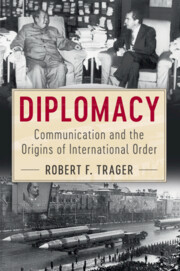2 - How Perceptions of Intentions Form
Published online by Cambridge University Press: 25 October 2017
Summary
The material and ideational structure of the state system does not limit states to a single reasonable course of action in all instances, and possibly not in any instances. In order to set their own strategies in world affairs, therefore, states attempt to figure out the plans and intentions of other states. As we have seen, the question of war or peace is often thought to hinge on how these perceptions form.
This chapter provides a systematic overview of these processes by analyzing data from the Confidential Print of the British Empire between 1855 and July of 1914. This provides a baseline against which the role of diplomacy in shaping perceptions can be evaluated. The data show the frequencies of inferences from different sources and allow for comparisons of how different types of inferences are drawn in different international political contexts. Analysis of this data provides the first overarching view of how state leaders’ perceptions are formed. In spite of the recognized importance of the topic, no study has systematically examined how inferences are drawn from a variety of sources across a wide range of foreign policy contexts. With the data analyzed in this chapter, we can distinguish, for the first time, the sorts of inferences that are made infrequently or by less consequential actors in world politics from those inferences that constitute daily life in the international system.We can see not just how states could draw inferences, but how leaders and diplomats actually develop perceptions of the likely future behavior of other actors. I examine how state leaders are reassured that another state is not aggressive, how leaders draw inferences about the use of force, and whether inferences in crises are drawn from different sources than inferences outside of crises. The data provide a picture of how the intersubjective space of state perceptions of intention is constructed.
The Confidential Print is a record of documents circulated by the British Foreign Office to the cabinet, officials of the Foreign Office, and the King and Queen. The British Foreign Office had principal responsibility for the formulation of British foreign policy since 1782, and from the 1850s, nearly every important Foreign Office document was included.
Information
- Type
- Chapter
- Information
- DiplomacyCommunication and the Origins of International Order, pp. 22 - 44Publisher: Cambridge University PressPrint publication year: 2017
